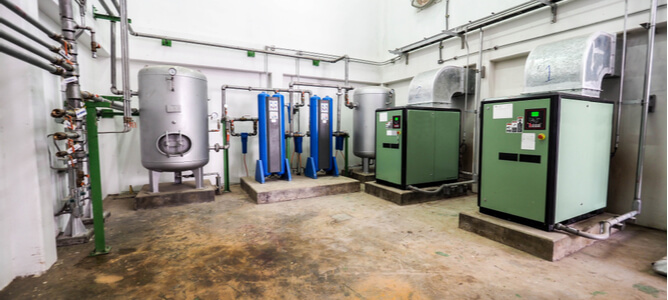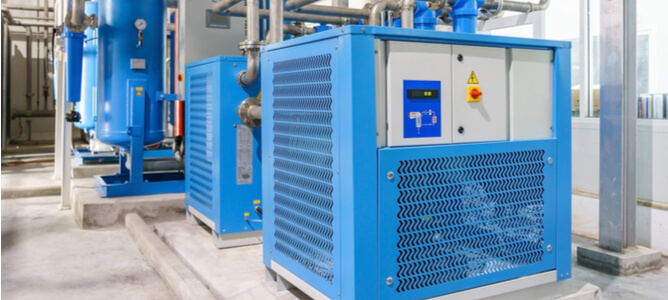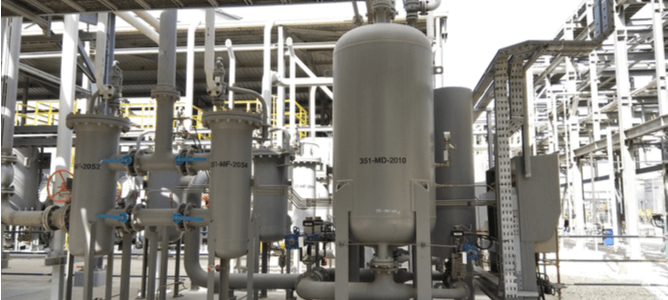
What Is a Compressed Air Dryer System? – Inline Air Dryers
Dry air compressors are crucial for various industrial and residential applications. As a result, operators depend on compressed air dryers for optimal operations. This article reveals how these systems adequately create functional dry compressed air.
What is a Compressed Air Dryer System?
Compressed air always contains water vapor and other moisture harmful to your tools, piping, and equipment. They can cause corrosion, control malfunctions, and ultimately, equipment breakdown. An inline air dryer removes the compressed air’s water vapor and moisture content before it gets to moisture-sensitive components and processes.
How Does an Air Dryer Work?
Each of these compressed air dryer types has its working principle. However, the general function of each is to eliminate most or all of the vapor content from the compressed air. The dew point of the resulting compressed air is used to measure how dry the air is: the lower its dew point, the lower its moisture content, and vice versa.
This article will explore the various types of air dryers for compressors and their working principles.
Advantages of Compressed Air Dryers
Using inline air dryers has its benefits. They include:
- Increase in piping, tools, and equipment lifespan
- Prevention of equipment corrosion
- Effective removal of particles, water vapor, and other moisture content from compressed air
- Equipment maintenance cost savings

4 Main Compressed Air Dryer Types
Outlined below are the four major compressed air dryer types available for a wide range of industrial applications:
1. Desiccant Dryers
The desiccant type air dryer working principle involves moisture adsorption from the compressed air stream onto desiccant materials. These materials are in compartments, and by pushing compressed air through them, effective drying occurs.
There are two types of desiccant air dryers: heated and heatless regenerative. Each has two compartments: the drying tower for the desiccant adsorption and the regenerative tower, which aids the removal of the adsorbed moisture from the desiccants. However, the heat source differentiates them: while the former requires an external heat source, the latter does not.
They achieve up to 99.99% moisture removal. This high efficacy makes them well-suited for critical applications. However, they are more likely to have higher procurement, operation, and maintenance costs.
Contact our team today to buy a compressed air dryer or get a quote on a desiccant air dryer rental!
2. Refrigerated Dryers
Refrigerated air dryer working principles include inducing water vapor condensation by cooling compressed air. The system then collects this condensed vapor with an internal moisture separator and sends it to the drain. The air compressor dryer achieves this cooling with the aid of a liquid refrigerant.
Several industry players know refrigerated compressed air dryers for their high efficiency and low procurement and maintenance costs. In addition, they can remove over 75% of air moisture content and are acceptable for general air compression applications.
3. Membrane Dryers
How does this air dryer work? The membrane air dryer working principle involves compressed air pushing through membrane tubes that collect and hold water vapor. A small fraction of the resulting dry air is subsequently used to rid the tubes of the trapped water vapor.
Membrane dryers can reduce the dew point of the compressed air down to -40℃ without decreasing its temperature. In addition to efficiently removing most of the moisture content, they can also filter unwanted particles. Plus, they require little space and zero power consumption.
4. Chemical Dryers
Chemical dryers use chemicals like calcium chloride and lithium chloride to strip compressed air of its water vapor content. They achieve a dew point of 15℃ by passing the compressed air over these chemical beds, which become saturated with water. A highly efficient coalescing filter is typically installed upstream of the air compressor dryers to prevent damage. A particle removal filter is installed downstream to avoid the output of chemical-laden compressed air.

Compressed Air Dryer Applications
The best compressed air dryers are frequently utilized in the following industrial and commercial applications:
Materials Manufacturing
Material manufacturing operations like pneumatic equipment powering, lathe chucks operation, pressure cleaning of mechanical parts, and component cooling typically require dried compressed air to ensure and maintain an optimized manufacturing environment.
Learn more about compressed air and N2 manufacturing processes.
Oil & Gas Recovery
Many compressed air dryer types have applications in the oil and gas industry. Some of them include:
- Driving pneumatic systems
- High-pressure enhanced oil recovery
- Oil and gas transportation
- Operation of drill rig controls
Most of these applications become hazardous with moisture-laden compressed air. Therefore, it is pertinent that operators efficiently remove this water vapor content to ensure safe operations.
Pharmaceutics
Compressed air free from water vapor and moisture is critical for pharmaceutical industry operations. Each process in manufacturing tablets, fermentation, instrument air drying, and drug drying and packaging requires dry compressed air. In addition, the air must be free from moisture to prevent contamination. Therefore, compressed air quality testing is also common in pharmaceuticals.
Fabric Synthesis
Textile production industries require high amounts of compressed air for air blow guns, air knives, lifting with pneumatic systems, and cooling equipment parts. Since moisture can damage fabrics, dry compressed air ensures their optimized synthesis.
Mold Prevention
Mold formation in workspaces can cause various health hazards and safety code violations. Inline compressed air dryer systems can easily handle this issue by maintaining the environment’s humidity within mold growth limiting levels.
Food & Beverage Production
Producing, packaging, and preserving high-quality food and beverages requires dried compressed air. Since air is a prevailing food and beverage contaminant, properly compressed air drying ensures their safe consumption.
Learn more about the need for compressed air in food packaging.
Residential Usage
Residential heat pumps, spin dryers, condenser dryers, hairdryers, and cloth dryers also apply air compressor dryers. However, most home-based applications typically relate to substance drying or incorporate into equipment types that require air drying.
NiGen Offers High-Quality Inline Compressed Air Dryer Systems
At NiGen, we offer dependable technological solutions to our clients in several manufacturing industries. For industrial players seeking the best compressed air dryers for rent or purchase, NiGen is the best fit.
Contact us online today to learn more about our compressed air-drying systems.

